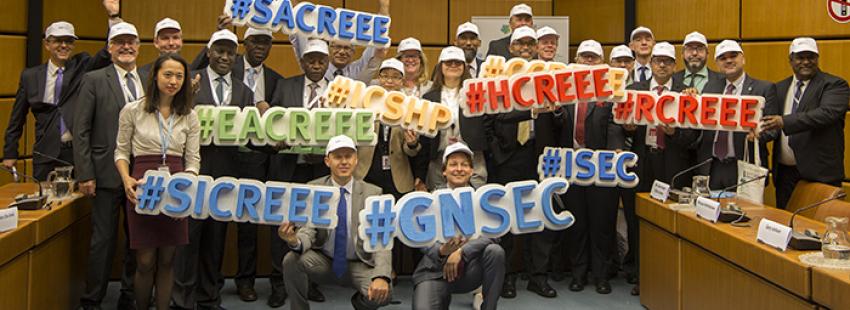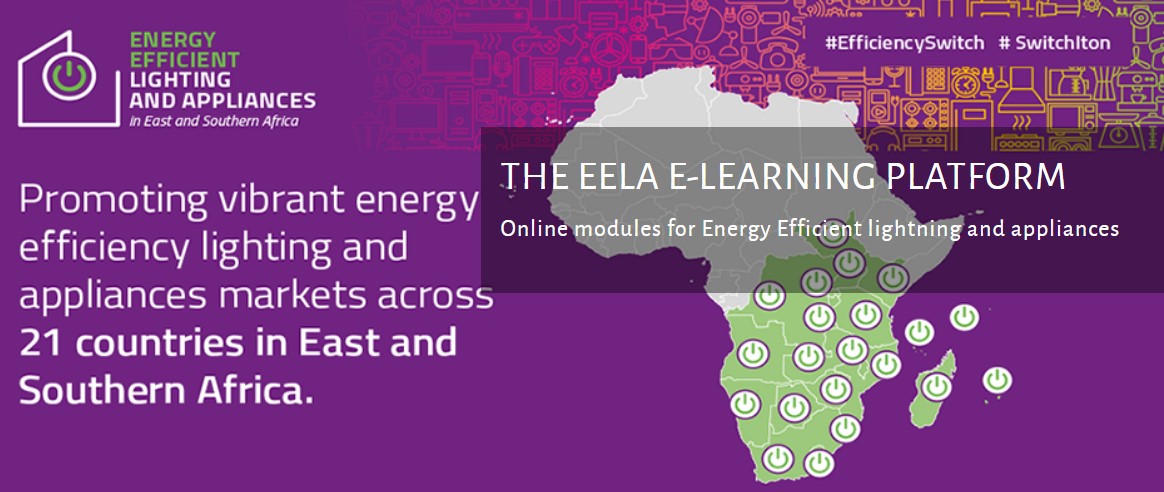Participants from East and West Africa Undertake Training in Renewable Energy Technology in China
With support from the United Nations Industrial Development Organization (UNIDO) team of 15 participants from Burundi, Kenya, Nigeria, Rwanda, South Sudan, Tanzania and Uganda undertook training on renewable energy technology in China from 20-28 March 2017. The mission was implemented within the framework of start-up and first operational phase of the East African Center for Renewable Energy and Energy Efficiency (EACREEE).
The objective of the training was to share best practices and lessons learned in small hydropower, solar - and biogas technologies for productive use at industry level, by three renewable energy Centres in China. This was achieved through visiting and holding discussions with management staff of various renewable energy (RE) technology Centres in Hangzhou, Chengdu, and Lanzhou.
The overall study tour was a full success. The participants could take strong key messages home, such as “Renewable Energy technologies are now easily available as well as global expertise to help our country”, or “Training is key for technology transfer”. The study tour provided comprehensive information about the specific renewable energy based technologies and informed the participants about passive solar energy buildings for cooling purposes and biogas production for rural areas using organic waste from farming activities.
Tour of Small Hydropower Facilities: This included visit to the International Center on Small Hydro Power (ICSHP), Siling Reservoir SHP Plant, Shizhutou SHP Plant and Zhejiang Jinlun Electromechanic (a SHP components manufacturer).
The International Center on Small Hydro Power (ICSHP) is a public and non-profit institution directly under the auspices of United Nations Industrial Development Organization (UNIDO), China's Ministry of Water Resources (MWR) and Ministry of Commerce (MOFCOM). The mission of ICSHP is to promote small hydro power as a renewable energy option to support sustainable development worldwide. During the visit, the participants were made to appreciate the China’s experience in promoting small hydropower (SHP).
Siling Reservoir SHP Plant is multipurpose reservoir was built mainly for flood control, but is also used for water supply, irrigation, electricity generation, as well as to generate tourism revenue. The dam is 44m high, holds 14.53 million m3 of water and has two turbines with a total installed capacity is 1.26MW.
Shizhutou SHP Plant is located near the Jinhua Base, Shizhutou SHP plant is a run-of-the-river system with an installed capacity of 3.2MW. The participants were excited to note the presence of a waterfalls ins not a prerequisite for constructing a SHP. The plant was constructed in area with a very gentle slope – giving just a very low head.
Zhejiang Jinlun Electromechanic is located in Jinhua in Zhejiang province. Founded in 1958, it was designated a key enterprise by the National Mechanical Industrial Bureau, and established as a UNIDO SHP Demonstration Base in 2005. Jinlun is among the top ten manufacturers of SHP equipment in China. Observing the process of manufacturing SHP components was so inspiring. The participants note that it was not a rocket science to manufacture SHP, but requires massive investment in the huge mechanical equipment.
Tour of Biogas Facilities:
This included visit to the Biogas Institute of Ministry of Agriculture (BIOMA), a Community Biogas facility run by BIOMA, New Hope Dairy Farm and Chengdu Shunmei International Trade Company (biogas digesters manufacturer).
BIOMA is the only national institution specialized in biogas technology and undertakes research and development on biogas production from agricultural waste for energy recovery. BIOMA also provides consultancy references for decision-makers in biogas sector, organizes trainings for technical and management personnel, supervises and inspects biogas facilities and appliances. BIOMA supported construction of a community biogas facility fed with animal waste from the village. The 80m3 facility was constructed using a low-cost technology and supplies biogas for 50 rural households.
Participants observe parts of generator under construction
New Hope Dairy Farm is located in Chengdu is home to 1800 dairy cattle and includes a biogas plant for cow dung treatment with a daily biogas production capacity of 650 cubic meters. The biogas is used to fire an electric generator rated at 120 KW. The design and engineering was supported by BIOMA.
Visit to community biogas facility near Chengdu
Tour of Solar Facilities:
This included visit to the UNIDO International Solar Energy Center for Technology Promotion and Transfer (UNIDO-ISEC) and Solar Energy Heating and Cooling Technology Experiment and Demonstration Center.
UNIDO-ISEC was established under the joint auspices of UNIDO and the Chinese Government. It aims at facilitating the promotion and transfer of solar and other renewable energy technologies. It also helps to improve energy structure, to increase energy conservation and reduce pollution emissions, to address climate change and protect the environment. It promotes South-South cooperation and economic and social sustainable development of the whole world.
Solar Energy Heating and Cooling Technology Experiment and Demonstration Center consists of 14 solar demonstration buildings and a solar testing ground. It is one of the biggest solar energy experiment and demonstration centers in the Asia and Pacific region. The center is home to one of the oldest solar PV installations – the 30-year-old 10kW solar PV system was the world’s largest by the time of its installation. The participants were excited to note that the same solar panels that were installed over 30 years ago are still in good shape and operational – reaffirming that the lifespan of solar panels are more than 30 years.
Prof Xi Wenhua explains to the participants about the 30-year old 10kW Solar PV System
All in one the study tour provided a great opportunity to get an insight of different renewable energy technologies, one participant stated: “I appeal for some more cooperation between my country and the Centres visited to expand and improve the deployment of Renewable Technologies in the country.” At the end of the tour all participants indicated great interest for more technical trainings that provide the opportunity to become specialized in a particular renewable energy technology.







